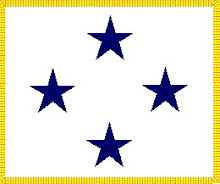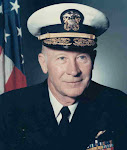
As the sun sat on June 19, Admiral Mitscher in LEXINGTON sent a message to all TG-58. “Desire to attack enemy tomorrow if we know his position with sufficient accuracy. POINT OPTION should be advanced westward.” At 1330 on June 20 the
-1-
ENTERPRISE and WASP launched search planes – eight Avengers and four Hellcats to search northwest for the Japanese fleet. About the same time Airgroup TWO was told to man our aircraft. On deck 14 F6F-‘s were loaded with two 500 lb. bombs and belly tank; 18 SB2-C Dive Bombers were loaded with 1000 lb bombs and 4 TBF-s Torpedo planes were hanging torpedoes and 2 TBS-s had 4 500 lb bombs. About 1430 we received word we could return to ready rooms to grab a sandwich and coffee or cold drink. At 1515 we received word to man planes again. We still had no word as to where the Japanese fleet was located. After about 45 minutes in the cockpit the word was passed to start engines. As I looked at the blackboard on the side of Primary Fly the Air Officer had printed in large letters the latitude and longitude of the Japanese fleet. As we put the information in our cockpit chart boards it became readily evident that it was well beyond the range of any aircraft to attack and return to our carriers (about 335 miles). We were under RADIO SILENCE (no radio transmissions) thus it meant no questioning the information as we sat prepared to take off with engines turning over. As Admira1 Jocko Clark leaned over the bridge I pointed to the blackboard and held my nose, indicating “We can’t make it!!” He gave a thumbs up signal with both hands meaning "Good Luck". At that moment dozens of microphones clicked, inicating many others wanted to say something, but not one transmission went on the air. I was never more proud of those pilots than at that instant.
Instead of circling our 38 plane deckload for the usual rendezvous of all aircraft units, we started a slow climb towards the northwest in order to conserve fuel. About 30 minutes after takeoff a message was received telling us that the Japanese were 60 miles further west. At this point I decided that we would pursue and attack then retire as far as possible before darkness set in, notify HORNET by key then have all the planes land in the water in the same vicinity so that rafts might be lashed together to make rescue more easily effected.
About 1830 with the sun low on the horizon like a blood red ball, clouds
-2-
from 3000 to 10,000 feet and a large cumulus buildup over 15,000 feet, we saw a mass of flashes from anti-aircraft guns such as we had never seen before. Immediately the sky was filled with deadly colored puffs – red, yellow, blue, black, purple and lavender as the marker bursts enveloped our formation. We came out from the large could buildup, I could see four major elements of their fleet. To the northwest was a large carrier, a smaller carrier, a battleship, two cruisers and eight destroyers. To the sourh was another group with a carrier, several battleships, several cruisers and seven or eight destroyers. Far to the south was a supply group and a number of oilers.
Immediately I called for Lt. Hal Buell’s division of 6 VB gto take the big carrier which I thought was SHOKAXU but I believe turned out to be ZUKAKU. The VB squadron commander, Lt.Cdr. “Soup” Cambell dived his group of 8 planes from the north. Several hits on the carrier were observed with fire coming out of the flight deck.
After directing the bomber aircraft towards the large carrier, I took our fourteen fighters down on a group of three carriers to the south which were HIYO, JUNYO and RYHO. After bomb release we strafed the decks and gun positions of the carriers attacked. (Later as observed by Lt(jg) George P.Brown and his crewmen ARM Babcock and AMM Platy from BELLEAU WOOD VT squadron who had been shot down and were in a life raft in the midst of the Japanese fleet, they witnessed he HIYO roll over and go down).
It became evident after the attack and the continuing dog fights that we would be unable to carry out my plan to all land together in the water. I called for all planes in Air Group TWO to retire towards out TG-58 which was closing the distance towards us. As the sun set and planes started landing in the water, I plotted the postion on my chart board to facilitate rescue, then lead as many planes as I could get to join up back towards our forces. As darkness came I was surprised to hear a signal sent for the destroyers “to make smoke”. (This would have been a good signal in the daylight, but hardly any help for making night landings).
-3-
With all carriers trying to land aircraft simultaneously there was considerable confusion in the area. In an attempt to assist pilots in landing and finding their ships, Admiral Mitscher ordered all ships to ”light pp", after a HORNET Avenger landed on LEXINGTON. He then sent a message for "pilots to land on any carrier”. Four HORNET fighters and torpedo planes landed on YORKTOWN, and one fighter landed on BELLEAU WOOD.
After finding HORNET and observing that all planes had not landed I headed up through the smoke where some of our planes had been circling, gave the “join up” signal, led them down to the ship and put them in the landing circle. When the last plane had landed, I commenced my approach, noting that the #1 and #2 wires had been pulled out by previous aircraft in their landings. I was at 50 feet over the ramp and was about to take a wave-off when the engine quit and I decided to dive for the deck rather than land in the water astern. Without the first two wires I stepped hard on the left brake to ground loop the plane, but it headed for the 40 mm gun mounts where I ended up in the catwalk. The flight deck crew chief said, “Skipper, you had better get out - - we can’t hold this plane much longer”. I grabbed my chart board and jumped to the deck saying, “Hold the plane until I can get the photo-film out”. They let go and all the film from the battle went overboard. I went ot the bridge and gave Admiral Jocko Clark my chartboard with the plot of where out pilos had gone down.
(On June 21, 51 pilos and 50 sircrewmen were rescuedand on June 22 and 23 33 more pilots and 26 aircrewmen were pulled out of the water. This was the total for from all carriers with a launch total of 226 planes from TF-58).
-4-
This memo was hand typed by Admiral Arnold and OCR’d for this posting.



2 comments:
I recently purchased an old slide rule that I belive
once belonged to Adm. Arnold. I would like to find out
when, during his distinguished career, he might have
used it. The more I learn about Adm. Arnold the
more I want to know. drrobb1(at)aol(dot)com
Warfare is a fascinating subject. Despite the dubious morality of using violence to achieve personal or political aims. It remains that conflict has been used to do just that throughout recorded history.
Your article is very well done, a good read.
Post a Comment